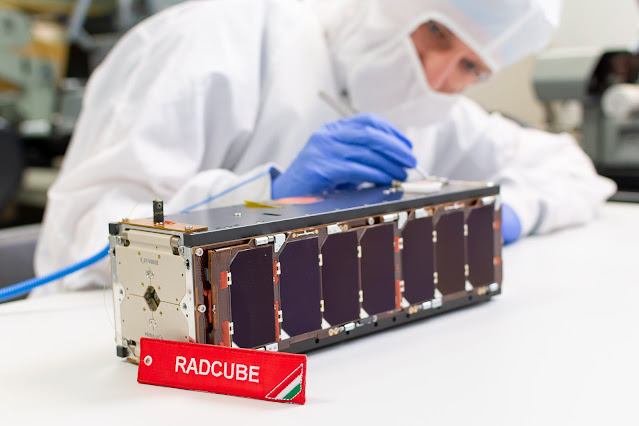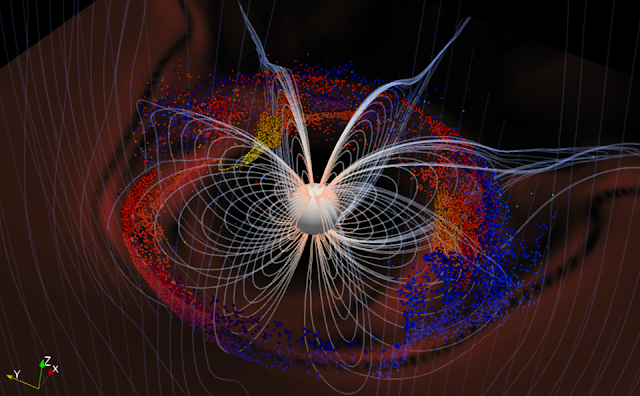Arianespace - ArianeGroup logo.
Sept. 23, 2022
Preamble
Between 1975 and 1992, the European Space Agency developed a manned space vehicle: Hermes. The vehicle was first designed with an appearance close to an American space shuttle, Shuttle, but smaller. It moved away from it as it was conceived. Hermes ends up looking more like the principle of Boeing's X-20 Dyna Soar. It was to transport 3 passengers into orbit thanks to the Ariane 4 then Ariane 5 launchers. Hermes was to allow crews to be sent on board a European space station, Colombus.

Image above: Project (1992 version) of the Hermes space shuttle, docked to the Columbus station. Image Credits: ArianeGroup/Airbus.
However, during the internationalization of the American space station project Alpha, becoming ISS (International Space Station), the European space station project Columbus was transformed into a series of modules on board the ISS. The Hermes space plane project was losing interest since the ISS was going to be visited regularly by the American space shuttle. NASA therefore proposed to Europe to use its Shuttle to embark European astronauts on board the space station. Europe chose to cancel the Hermes project in 1992.
Reusable, intended for human spaceflight... With its Susie launcher, ArianeGroup wants to boost European space ambitions
At the opening of the major space conference of the IAC (International Astronautical Congress) being held in Paris, ArianeGroup struck a blow. The industrialist has unveiled a reusable floor project capable of transporting up to five astronauts. Enough to reposition Europe at the heart of the space challenges of the next decade.

Image above: With Susie, ArianeGroup unveiled a reusable launcher stage project capable of carrying up to five astronauts. Image Credit: ArianeGroup.
ArianeGroup struck a blow on the opening day of the IAC (International Astronautical Congress), the major annual space conference being held this year in Paris from September 18 to 22. The manufacturer has unveiled nothing less than a launcher stage project with such capabilities that it would put Europe back in the space race, alongside the United States and Russia! ArianeGroup has unveiled Susie (Smart Upperstage for Innovative Exploration), a fully reusable floor project. “Susie is a fully reusable stage project replacing the launcher fairing, which allows you to go into space, carry out many types of missions, whether automatic or piloted, and return to land on Earth”, specifies the company.
Better still, this new stage would eventually be able to carry a crew of five astronauts, allowing Europe to establish itself as a new player in the field of manned flight. With Susie, ArianeGroup would therefore kill two birds with one stone: accelerate reusability in the field of heavy launchers, and offer manned flight capacity to Europe in space. It was time. The European group has already accumulated a significant delay vis-à-vis SpaceX, which has been firing at a hellish rate, thanks to its reusable rockets, and which has been transporting astronauts to the international space station for almost two years.

Image above: Susie in orbit, separation of the second stage of the Ariane 6 rocket. Image Credit: ArianeGroup.
A new spatial deal
ArianeGroup does not want to waste time. The group announces that this new stage (for the automatic cargo version) would already be compatible with the Ariane 6 rocket in its version equipped with four boosters (ie Ariane 64) to replace its fairing. However, this stage could also fly with a next-generation heavy launcher and accomplish the entire spectrum of missions up to manned flight. Ariane 6 is due to make its first flight in 2023, according to a schedule that remains to be specified by the ESA (European Space Agency). The European rocket has accumulated more than two years of delay due to the Covid pandemic and the difficulties of technical development of certain equipment.
Ariane 6 rocket with SUSIE liftoff. Image Credit: ArianeGroup
Europe space and ArianeGroup have long wondered about the relevance of reusable technologies. This technology is if the operator has a sufficient rate of fire. This is the case of SpaceX, which reuses the same floor up to 14 times after having refurbished it. On the occasion of the space conference of the WSBW (World Satellite Business Week), which was held in Paris from September 12 to 16, its vice-president in charge of sales, Tom Ochinero, spoke on this subject. . “We launch on average every five days. We have made 42 launches since the beginning of the year,” he said.
At this rate, the company led by Elon Musk should have made more than 60 shots by the end of the year, almost double that of 2021! Blue Origin, the space company created by Amazon founder Jeff Bezos, is also banking on this technology. Its heavy launcher, the New Glenn, has a first stage that can be reused up to 25 times.
ArianeGroup SUSIE reusable crewed lifting body upper stage spacecraft
Will Ariane 6 have enough cadence to justify the reusable technology? Until now, Arianespace and the ESA mentioned a rate of about ten shots per year. This seems very insufficient to justify reusability. However, the space market is experiencing profound upheavals, in particular with the rise of telecommunications satellite constellations, the Artemis lunar program, the acceleration of military space programs... In April, Arianespace won the largest contract in its history from from Amazon. To deploy its Kuiper constellation, the e-commerce giant has ordered 18 Ariane 6 to be launched from the European spaceport of Kouro, over a period of three years.
New outlets for a European rocket
In addition, Arianespace could find new outlets with the American lunar program Artemis. NASA could entrust it with missions to transport equipment to the Moon or the future station in lunar orbit, the Lunar gateway. Finally, manned flight would also be a new outlet for Ariane 6, whether to bring crews to the International Space Station (ISS) or to the future station in lunar orbit.

Image above: Susie in orbit, inspecting and upgrading a satellite. Image Credit: ArianeGroup.
And that's not all. According to ArianeGroup, Susie could fulfill the new so-called in-orbit service missions for the benefit of the entire space community: manufacturers and operators of satellites, space agencies, air and space forces… “Among the missions rendered possible by Susie include towing, inspecting and upgrading satellites and other payloads, supplying space stations with fuel, food and equipment. It will also be able to allow crew changes and human work in orbit”, specifies the industrialist.
By proposing Susie on the occasion of the major IAC conference, ArianeGroup pulled the trigger at the right time. Space Europe is at a turning point. The war in Ukraine and the unilateral decision of the Russian Space Agency to cease its cooperation with its European counterpart (stopping of the Exomars mission, end of Soyuz activity in Kourou, etc.) revealed the dependencies and fragility of the space sector European. Europe must redefine its ambition in November, on the occasion of the major conference which will bring together the ministers of the European Space Agency (ESA) Member States in charge of space. ESA President Josef Aschbacher has set the bar very high. He expects member countries to agree to an astronomical budget of around 18.7 billion euros for the next three years, an increase of around 30% compared to the previous period. If her call is heard, and if Susie is selected and then funded, this new stage project could be much more than a rocket... but the means for Europe to get its new space ambitions off the ground.
Related article:
Amazon signs multibillion-dollar Project Kuiper launch contracts
https://orbiterchspacenews.blogspot.com/2022/04/amazon-signs-multibillion-dollar.html
Related links:
ArianeGoup Unveils SUSIE at IAC: https://press.ariane.group/arianegroup-devoile-susie-a-liac-4735/
Arianespace: https://www.arianespace.com/
Images (mentioned), Video, Text, Credits: ArianeGroup/Orbiter.ch Aerospace/Roland Berga.
Best regards, Orbiter.ch





































